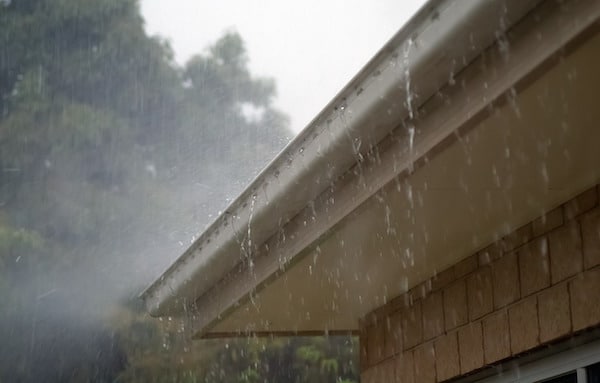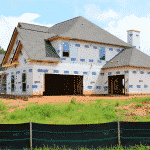Standing water near your home’s foundation caused by improper grading or faulty gutters and downspouts can cause damage, including slab movement, retaining wall failures, and slope instabilities. It can also lead to serious foundation problems, requiring costly repairs to your home’s structural system.
In the city of Dallas, we experience more trouble with poor drainage than many other cities, because most of the homes in our area are constructed on clay soils. Clay soils expand when wet. This expansion puts excess pressure on your home’s foundation and structural systems.
Moving water away from your home quickly during stormy weather is crucial to keeping your home structurally sound. This relies on: 1) proper grading – sufficient slope of ground away from your home, and 2) gutters and downspouts that channel rainfall outward.
About Proper Grading and Slope
Ideally, your home should be located at a high point on your property, with the soil sloping downwards around all sides, so that rainwater flows away from the structure quickly and easily. Experts recommend a minimum of 2% slope, which means the ground should drop no less than 2 inches every 10 feet as you measure away from your home. A higher slope is better, although it can also complicate lawn care.
You can measure your soil’s slope in 3 easy steps:
- Place a straight 2 x 4 piece of lumber that is at least 10 feet long on the ground with one end against an exterior wall and the other end projecting outwards, perpendicular to the wall.
- Place a level on the 2 x 4 and raise the far end (the one away from your home) vertically until the 2 x 4 is horizontally level.
- Measure the vertical distance between the raised end of the 2 x 4 and the ground. It should measure more than 2 inches.
Repeat this process every 3 feet around your home. If slope is insufficient in some areas, call a landscaping expert for advice.
About Well-Functioning Gutters and Downspouts
In addition to grading, gutters and downspouts play a key role in drainage. You want your gutter system to move water at least 3 feet away from your home as quickly as possible during a rainstorm. Gutters should slope ½ inch for every 10 feet of length to keep water moving. They should be kept free of debris to ensure they do their job.
The number and placement of downspouts is also important. If too much water is draining through a single downspout, consider adding more. To redirect water away from the home as quickly as possible, the end of your downspouts should curve outwards over a long splash block. As with gutters, downspouts need to be kept clear to avoid water backing up on the roof or spilling over gutters’ sides, where it can pool next to your foundation.
What Your Home Inspector Looks For
The Texas Real Estate Commission has established requirements for Dallas home inspectors as they inspect grading and drainage systems. Inspectors are required to report any deficiencies in:
- Drainage around the foundation that is not performing,
- Deficiencies in grade levels around the foundation, and
- Deficiencies in installed gutter and downspout systems.
Inspectors are not required to:
- Inspect flatwork or detention/retention ponds (except as related to slope and drainage),
- Determine area hydrology or the presence of underground water, or
- Determine the efficiency or performance of underground or surface drainage systems.
Since 2007, Dallas home inspector Keith Boggs of Stonebriar Property Inspections has been providing thorough, accurate home inspection services of the highest quality. Contact Keith at (214) 923-7304 | [email protected]. Appointments available 7 days a week, including evenings and weekends.





